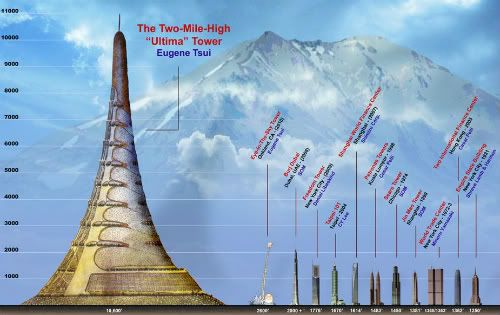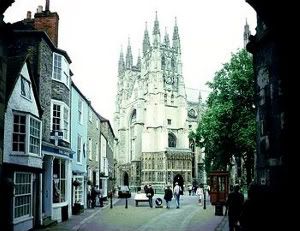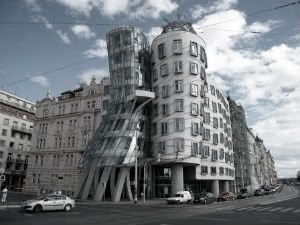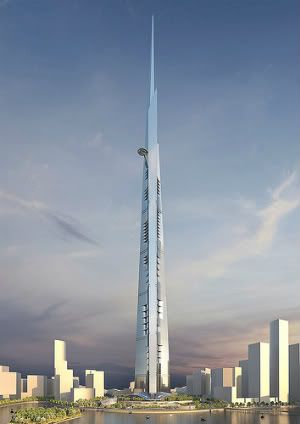Salon magazine's Will Doig has been running a remarkable series of essays on the future of cities. In his latest, he explores the role of bicycles in slowing down the frenetic pace of city streets until they become safe, comfortable and attractive people places again.
The entire essay is well worth reading, but the following passage jumped out at me:
It feels strange to equate slowing down with moving ahead, but in some ways, slowing down cities, much like the slow-food movement, is about shrugging off some of the 20th century’s ill-conceived "innovations."
This really articulates a lot of what motivates my thoughts on cities: not some reflexive get-off-my-lawn conservatism, but the sober recognition that you can't just throw out thousands of years of embedded knowledge about how to enable large groups of people to coexist peacefully and productively.
Of course, there are some amazing 19th and 20th century innovations that, either by design or happy accident, really are material improvements that make city living cleaner, safer, friendlier, more attractive and more rewarding:
and so on.
What all these innovations have in common is that they are compatible with or actively encourage density, by which I mean a lot of people and a lot of uses in close proximity.
Density is the magic pixie dust that turns agglomerations of people into engines of economic development, and anything that makes it easier and more pleasant for a lot of people to live close together is going to accelerate the creation of wealth.
In a dense urban environment, you don't need fast-moving vehicles, because you generally don't need to travel long distances to get where you are going. What you need are safe, comfortable streets that allow you to move at a human scale around your environment.
As Wesley Marshall and Norman Garrick explain, when we design streets to accommodate a variety of modes instead of allowing automobiles to dominate, that almost necessarily results in lower vehicle speeds.
Lower speeds, in turn, accomplish two tangible goals: they reduce the number of crashes and collisions, and also reduce the severity of injuries in the crashes and collisions that do occur. (Intangibly, they allow for a street environment that feels safer to pedestrians and cyclists and attracts more of them.)
Most of the 20th century, and particularly the latter half, was characterized by an almost frantic desire to break with the past and invent whole vocabularies of architecture and city design from scratch, with the inevitable result that a lot of authentic wisdom was discarded along with the conventional wisdom that had perpetuated so much historic misery.
We saw writers gleefully celebrate the act of "cutting away the rot of the Victorian age" by wiping away whole city blocks to drop in futuristic mega-projects for futuristic people. Could personal rooftop helipads and jetpacks be far off?
It's as if we became collectively incapable of distinguishing field-tested good ideas from self-serving prejudices, and so we tossed it all away just to be safe.
Now we're stuck undergoing the painful process of re-establishing those practices that actually did work - like "New Urbanism", which is nothing more than a modern code for traditional neighbourhood development, and "Shared Space", which is nothing more than a modern code for traditional mixed-use streets.
Thanks to the methods of inquiry to which we now have more or less general access, the process of reinventing and rediscovering what works shouldn't take nearly as much time - or as much random trial-and-error - as it did the first time around.
Yet it's still depressing to contemplate how much needless ecological destruction (not to mention personal alienation and depression) we will collectively suffer in the meantime.
It's also depressing to contemplate how tenaciously some people are clinging to these new, disruptive and unsustainable ways of living - and all, irony of ironies, in the name of tradition!
It's a strange world indeed when those who defend the recent, radical, unimpeded auto-mobility that is well-proven to attenuate community engagement can be regarded as conservatives, while those who defend traditional neighbourhood development are considered radicals.
(h/t to M Adrian Brassington for sending me the Salon article.)
By mystoneycreek (registered) - website | Posted December 19, 2011 at 21:08:09
So I'm curious how this concept of 'lower-speeds are good' fits in with LRT philosophies that include the need to have dedicated, right-of-way lanes, getting people from one side of the city to the other in the shortest possible time, that sort of thing.
Unless of course we're only looking at the downtown core as being the true beneficiary of slower overall speeds.
By Milton Friesen (anonymous) | Posted December 20, 2011 at 09:54:48
Ryan, thanks for the link to the Salon articles and your commentary on these issues. I've written a paper for a UWaterloo class that might be of interest. It examines how Christopher Alexander's work could point toward new approaches to planning. It's about 20 pages long but is, I think, mostly very readable. If it's of interest, I could post a link to the Google Doc version.
By Mahesh_P_Butani (registered) - website | Posted December 20, 2011 at 15:58:17 in reply to Comment 72407
Hello Milton,
It is good to have someone with your background and interests here!
Although I am conflicted about the "Cardus" factor on your planning and design thinking :) I am familiar with your works and interests and admire your output in this field.
Your paper: Interrogative Planning - Questions to Orient both Theory and Practice - (if this is what you have referred to above) - is a great introduction for Hamiltonians to Christopher Alexander's work and its connections to a better way of approaching our urban design problems.
I would also like to draw your attention to a seminal book on urban design which could fundamentally alter our approach to urban design thinking - and directly impact our cities: "Principles of Urban Structure" written by Nikos A. Salingaros - a close friend and associate of Christopher Alexander.
This book although not referenced in your above paper, in my opinion sums up that 'body of knowledge' which has simply not been integrated into our planning and architectural curriculum across the world. Many of our urban development issues arise from this.
Although this book was first published in 2005, by Techne Press, Amsterdam - it is surprising that many in the urban design field have not heard of it. But then many architects and planners have also not heard of: Alexander R. Cuthbert's, Requiem for an era of urban design - which sums most brilliantly the urban design field of the last century .
It is my sincere hope that "Principles of Urban Structure" - which is a collection of important essays, written and published over the last fifteen years in various journals, becomes the foundational text upon which present and future generations of urban planners, designers and architects build their studies and practice. In my opinion the knowledge contained in this book is capable of reconnecting our fossilized humanity with the evolving science of urban design. The lost art of city design can only be found once again through such clear thinking.
Mahesh P. Butani
Comment edited by Mahesh_P_Butani on 2011-12-20 16:12:14
By mystoneycreek (registered) - website | Posted December 20, 2011 at 10:07:40 in reply to Comment 72407
Milton, I'd like to read that. I've been fortunate to have been directed to some quite-informative papers courtesy of UWaterloo students, so please, link away.
Comment edited by mystoneycreek on 2011-12-20 11:52:20
By highwater (registered) | Posted December 20, 2011 at 12:45:18
A commenter purporting to be Marvin Ryder just posted the following on the Hamiltonian:
"While I am a believer in the value of Light Rapid Transit to Hamilton, I think everyone needs to realize that this is a "long-term" action. No one should expect to see any significant construction begin before the year 2025 and possibly not before the year 2035."
Blergh.
By fast track (anonymous) | Posted December 20, 2011 at 14:51:53 in reply to Comment 72411
Here is a fast track solution that meets the needs of the city now without risking LRT failure due to lack of resources, space and ridership
http://bayobserver.wordpress.com/2011/12/19/best-of-2011-right-sizing-lrt/
By Mahesh_P_Butani (registered) - website | Posted December 21, 2011 at 14:51:36
"LRT can indirectly slow down city life by encouraging dense urban development. But its direct effect is to speed up travel within a city." ~ John Neary

"...the creation of new theory demands that the best of the old falls under the microscope." ~ A. R. Cuthbert.
The Paradox of Intensification - (video) highlights the huge disconnect that exists between "evidence" and "evidence-based thinking" amongst Hamilton's urban enthusiasts.
What often appear as evil-intent and quickly labeled as disparagement of the enshrined notion of "LRT" - is in fact the slow grinding search for evidence.
Most of our trusted notions and impulses on planning and transit end up being just that - when we look back on how we have come to be where we are:
St. Clair LRT Almost Ready to Open ~ December 11, 2009, by Rick McGinnis
(public sentiments in 2009: "But the travesty and exceptionally poor planning of the St. Clair debacle, not to mention ideological, as opposed to research-based justification for the project, is not the way to promote transit-use in the city.")
*A Post Mortem for St. Clair’s Construction ~ January 17, 2010 by Steve
(public sentiments in 2010: "At some point, one has to conclude that the TTC is congenitally incapable of operating a world-class light rail transit system. I’m going to suggest that point should come after two separate trial projects, St. Clair and Spadina, have both turned out to be profoundly mediocre; and BEFORE spending an additional $8 billion to find out that, no sir, the TTC really doesn’t have any idea how to design, build, and operate street-level rail.")
Getting it Right - Lessons from the St. Clair Streetcar for the Implementation of Transit City ~ 7 January 2010, Les Kelman and Richard M. Soberman
("A report about the lessons learned from the St. Clair construction project and their implications for work on Transit City.")
Our public discourse around urban issues, however well meaning lacks the rigor and dispassion required to develop rational solutions to our highly complex problems.
In most cases our problems suffer from lack of definition and are solely driven by unexamined passions. And when our preconceived needs and unexamined passions are not immediately gratified we publicly punish those who dare to spend time examining evidence.
We kill a little bit of ourselves as a community with every biased discourse, we destroy the spirit of innovation and progress with every bit of punishment we inflict on others who do not toot our ideology.
Maybe nature is withholding progress from our community, until we mature enough to handle the responsibility which comes from seeking change.
Here is a recent example of what can happen when we fixate on ideology at the expense of evidence:Hundreds gather to celebrate cars returning to K Street, Sacramento ~ November 13, 2011
Change requires original thinking, which requires putting ideas under a microscope, which requires respect for diversity and opposing views, which requires us to stop publicly gang-banging people who offer answers to questions which we have not yet learned to frame correctly.
Mahesh P. Butani
Comment edited by Mahesh_P_Butani on 2011-12-21 16:05:06
By mystoneycreek (registered) - website | Posted December 21, 2011 at 15:47:29 in reply to Comment 72463
The Paradox of Intensification - (video) highlights the huge disconnect that exists between "evidence" and "evidence-based thinking" amongst Hamilton's urban enthusiasts.
I just viewed the video.
My Christmas wish would be a discussion of what it proposes, led by Ryan, Jason and Mr. Neary.
(Oh, and to meet those who downvote my sincere and genuine Christmas wish. Bah-humbuggers!)
Comment edited by mystoneycreek on 2011-12-21 15:55:04
By Undustrial (registered) - website | Posted December 23, 2011 at 15:58:08
How does LRT slow down city life when in fact it is designed to speed it up?
Because it's about the pace of life, rather than individual trips.
Cars can make a trip very quickly, but a much greater cost than bikes or trains, both in terms of space and time. Because cities with high car ownership need a lot more space for roads and parking, the distances travelled generally increase. Cars enable people to live, work and shop much further than would be otherwise possible, so this encourages long distances. At the same time, because cars cost so much more money, this requires a fair bit of extra time at work, cutting into the time you have available to make those trips. Combine these two factors and you may be moving faster (less time x more distance), but you're probably not getting anywhere any quicker.
LRT needs far less space (one lane, no parking) and much less money. It encourages higher-density land use and therefore allows us to achieve the same goals with shorter trips. At the same time, it's less of a financial burden than a car, so people have more time. In any case, one train moving at 50kph is still better than a few dozen cars rolling down the same street at the same speed.
As far as the paradox of intensification goes, it really highlights how the problems of car culture are not confined to the suburbs...
By TnT (registered) | Posted December 24, 2011 at 14:25:33
I find the either or argument to be very disturbing in this city. The belief that cars and transit don't go together is off base. In theory nothing would be more economical and ecological then 100% public transit. The unravelling of the roads, houses, etc we have now is undoable. The reality is it has to be multiuse solution. The needs of the car are easy to sastiate with controls of systems in cities. Not driving at all costs. Not trucks at all costs. Also not bikes, trains, or taxis or whatever at all costs. It is like LRT or GO. We really can have it all.
Comment edited by TnT on 2011-12-24 14:29:30
By exactly (anonymous) | Posted December 24, 2011 at 15:29:23
What is needed is a dispassionate discussion rather than a passionate one. Ideals are wonderful but rarely practical when they stifle civil discourse and honest exchanges of ideas. Idealism must give way to practicality infused with idealism. Everyone would like to have it all and have it now but that too can get in the way of progress if there is no compromise to practicality and an all or nothing attitude. Simply understanding human nature and remembering you can catch more flies with honey than vinegar is also needed. I fear for the future as more and more, at every level, discourse is becoming confrontational to the point of disagreements when all parties agree because its the politically correct thing to do
By Mahesh_P_Butani (registered) - website | Posted December 25, 2011 at 06:44:36
"...But those two towers should be signatures on our skyline." ~ TreyS
"...Most cities try to go taller with time and build their core neighbourhoods and skyline. We're trying to do the opposite..." ~ jason
Here is to looking at tall buildings and taller mistakes. Much like a cluster of tall buildings often pretends to be a city - this comment is pretending to believe that we are having a real discourse on architecture and urban futures here. How many of us would give up a limb to live in an unique, timeless and appropriately scaled urbane city rather than an inappropriately scaled cluster of date-stamped gheryish buildings?
Why is that we always associate tall and lean with sexy? or why is that to be considered "sexy" - we choose tall and lean - often with a rich dollop of fragmented fuzz or gooey ooze as its defining characteristics?
What about short, squat and sexy? or medium, dense and sexy? why do these words fail to light up our hormones as easily as tall, lean and sexy does?
Throw in a glass curtain wall and the combination: Tall, Lean and Sexy (TLS) starts to sizzle - and our synapses start to hyperventilate. We are on fire and our smoke filled brain makes us genuflect right there and then on the streets, in front of our TLS towers - screaming in reverence: Oh God... yes! yes! yes!!

Mile-high tower ~ Frank Lloyd Wright
The thought of architectural bestiality does cross the minds of elderly residents who have lived in one of those tall sexy things through the last power outage or the last time they forgot to pick up something on their way home, and had to go down all the way once again in inclement weather.
Now we are talking of a totally different kind of going all the way down here! but our preferences should be of no concern to them... besides those pesky elderly will soon be dead anyways, and after all it is our life and our future we are talking about here - so what right do they have anyways to judge us on what we worship?
You can almost feel the silent horror on the faces of the young mothers in strollers with little gurgling babies, as they pass us genuflecting on the streets screaming... yes! yes!! yes!!! One does begin to understand the true meaning of architecture, as we continue to ignore their disgust as they go up and down the TLS towers often twice and even three times a day, passing us as they traverse long hallways on longer elevator rides to their play dates in the park or their daily live/work rituals.
Why do shorter, glass encased buildings fail to mesmerize us any more?
The Bell building on King across from the art gallery simply does not cut it for us. It is simply short and stubby. Even its glass curtain wall fails to jiggle our testosterone. We simply go... ugh! at such sights, or worse, we glibly ignore its existence by politely saying: what building?
So, what is really going on here? Cultural conditioning? size bias? obsessive preferences? compulsive behaviour? genuine concern for density and sustainability? machismo? or benign pigheadedness?
Now before we jump to conclusions here and turn this into a local thing, let us be fair - we are not alone in our preference for architectural bestiality. Many cities across the globe are prone to the seductive charms of TLS towers. 2300 feet is way too short and stubby... we go blergh!

TLS definitely does seem to do things to a lot of people in many cities. But what is it that it really does?

Maybe it is time for a new kind of urban anthropology to emerge and shed light on our condition.
My guess is this has something to do with how it makes some people feel deep down inside - possibly related to mortality and the dubious need to triumph over natures processes.
I suppose tall, glassy, slender, well contoured objects energizes some, and makes them feel younger and in control. Age, contours and sex are after all the defining markers of our times. The word 'cool' may be trying to say all of this in a hurry.
This thing about TLS being an answer to density, ecology, livability, small foot-print on earth, distinctive urban signatures for economic development and ROI/EBITDA reasons, social or technological progress of mankind, celebration of the human spirit...etc., etc., is pure unmitigated blather which we know all too well deep inside, but come on, who has not failed to sneak a longing glance, sideways at a TLS goddess or otherwise, strutting down the street? We are hardwired for the unsustainable. Like moths we zoom in knowing well the repercussions. Hey, even our pastors fall prey to such longings... we after all are just humans.
Can you name a single invention or a social innovation worth mentioning in history which can be causally tied to the 'coolness' of a building?
TLS affirms that age is not going to catch up with the infatuated as yet, and possession of it or basking in its glory provides a physical manifestation of the abstract notion of power which is the ultimate aphrodisiac. It also gives the ultimate physical meaning to the abstract tonal ejaculation: "yes! yes!! yes!!! Oh God, yes! which is merely attempting to say: I have finally arrived - or in any case almost about to... so, come watch and share with me my fulfillment!
TLS becomes an extension of one's own self in many ways and propels libidinal energies which drives the 'gotcha have it right now' thinking. However, I really doubt that it could do anything for long-term fulfillment - which is why pharmaceutical companies are multi-billion dollar operations, and penthouses go for a premium - while couples in TLS situations most often than not, have a higher rate of split-ups while all psychiatrists upon graduation are pre-qualified for TLS condo mortgages.

Two-Mile-High tower, The Ultima ~ Eugene Tsui... a colossal disconnect in the name of Biophilia
But as many soon discover, TLS objects - animate or inanimate, end up requiring a lot more nurturing and maintenance - much more than their operating manual disclose. Thoughts about super high-maintenance and short shelf-life are never mentioned. They simply don't matter when one is genuflecting in deep-worship mode.
For the umpteenth time "evidence" based thinking clearly tells us: please! please!! stay away from TLS, please!!! it is not good for the heart and simply not good for the soul, let alone the old tired bones. But the libidinal energy is simply too intense to resist, let alone abstain.


The tallest spires in the city were a metaphorically connect with an higher power which set the limits to physical aspirations. Some of us thought it was pointing us towards unbridled heights - while all they were attempting was to attract a larger congregation from far and wide in order to physically structure society and give it an aesthetic and social meaning that was grounded in sustainability.
And while we once genuflected in front of them too, for entirely different reasons - the rational in our times has changed, our Gods are different now.

Is there any chance that the heights to which the church spires aspired is the optimum our civilization has been designed to handle - before it starts to fold on itself?
Remember back when the church spires were the tallest in the city - essentially a city's skyline signature?
Building anything higher than the height of the tallest spires in older cities was once taboo, for it not only marred the very distinctive skyline of the city, but more importantly, it also damaged society's sustainability and generated an aesthetic overreach.


Maybe there is a metaphysical, and in turn, a divine mathematical connection between societal sustainability and the height of church spires.
On the other hand, maybe there are no such connections. God after all is directly beamed into our private surround-sound chapels in our times via HDTV - be it on the sixth floor or the hundred and sixtieth.
But nonetheless, it is something worth looking into - for it must be a real puzzle for our seniors to watch some among us genuflecting in front of TLS objects - hands clasped, head bowed in reverence, moving rhythmically in self-pleasure, screaming yes! yes! yes! oh God! yes!! ...even, more! give me more!! now! yes!!

Evidence is nasty business. It is humbling, well-meaning, yet brutal and has a way of taking away our small pleasures and even smaller indulgences for the larger good. So we fight it everyday. To circumvent it we have invented a novel approach. We have usurped its very essence which gives us the latitude to say and do what we want by liberally sprinkling our conversations with: "evidence-based" talk - the ultimate co-option of 'evidence' to legitimize our frequent sideway glances.
The suburbanites are not the only ones who stand accused of being in denial of evidence - we urbanites are equally culpable of being unsustainable based on our weakness for the TLS.

Some thoughts on "crafting the city's future -- not just topping off the skyline.":
The San Francisco Paradox: When good cities have bad architecture. (Thread)
Nothing to lose with lower towers: Design would still be striking but fit in.
A voice from the past: 1, 2 which may help understand what really constitutes sexiness among the short and squat of architecture; and some tall ideas resurrected 3,4 to validate our own.
The blunt 'cutting-edge' of architectural design thinking in our times. (a, b, c, d)
A Merry Christmas and Happy Holidays to all! and hopefully we begin to worship the little things in our lives in the coming year 2012 - which just may be the defining year for the human race in our times.
Mahesh P. Butani
Comment edited by Mahesh_P_Butani on 2011-12-25 07:54:57
By Mahesh_P_Butani (registered) - website | Posted December 29, 2011 at 17:26:19
For those who see city building as an object-oriented exercise, here is the ultimate turn-on which should put the smile back on every TLS lover - after the above blasphemy :)
But before you go and say: Oh Yes!! here is something: 1, 2, 3, 4, 5 -- to be mindful of... just in case it turns out that our economy - the chief planner of our cities, decides to do its own thing in the coming years.
When you look behind the TLS skylines and the iconography we have come to worship, you may discover that much of our urban devastation over the last century was planned by poor thinking and poorer social behaviour.
"It is the social environment and not the physical environment which is the primary determinant of the health and well-being of people who live in cities..." ~ Loren Hinkle, 1977 (from: A Plague on Your Houses, -"a frightening study of the way misguided and malevolent social policy can spark a chain reaction of enormous and unforeseen urban collapse" -- "a book which transcends the boundaries between politics, theory, empirical research and political activism" by Deborah Wallace and Rodrick Wallace.
In the context of Hamilton's lower-city regrowth, if we are cognizant of the social realities of our core neighborhoods... our skyline will take care of itself.
Rather than Cranespotting and TLSgrovin - which perpetuate taller thinking and more class disconnects, the more relevant discussions mid-size cities such as Hamilton ought be having could be around thoughts such as:
It is from such a mind-space that we will be able to develop the imagery for our urban futures which respects our emerging demographics while reflecting our economic realities.
Design's most critical element is to have people in mind ~ Yves Behar, fuseproject
Our conversations in 2012 should be about wholesome communities and not about superficial form-based thinking driven by ideologies of the last century.
The Hairy Ape (1922) by Eugene O'Neill.
There are patterns and there are -patterns-. The misguided cross-talk between the two here, is what is presently driving Hamilton's urban design conversations. We need to stop and realize the damage we are doing to our thinking and our expectations of Urban Futures.
Mahesh P. Butani
Comment edited by Mahesh_P_Butani on 2011-12-29 18:00:06
By Mahesh_P_Butani (registered) - website | Posted January 01, 2012 at 20:18:33
73 years of new year wishes and new resolutions. This year will be different, we say... Will it?
"Year by year our cities grow more complex and less fit for living. The age of rebuilding is here. We must remould our old cities and build new communities better suited to our needs". ~ The City, 1939
Patrick Geddes, Ebenezer Howard and Lewis Mumford's lives intersected in the early part of the last century leading to a serious search for alternatives to the big urban/suburban question of the time. The NY World Fair of 1939 provided an opportunity to highlight this question with this remarkable documentary film called "The City":
Here is an interesting question to kick off an yet another new year:
"To what extent and in what ways does urban form contribute to sustainability?" ~ Dimensions of the Sustainable City, by Mike Jenks, Colin Jones.
A very Happy New Year to all!
ps: After The Fair
Comment edited by Mahesh_P_Butani on 2012-01-01 21:23:30
You must be logged in to comment.
There are no upcoming events right now.
Why not post one?